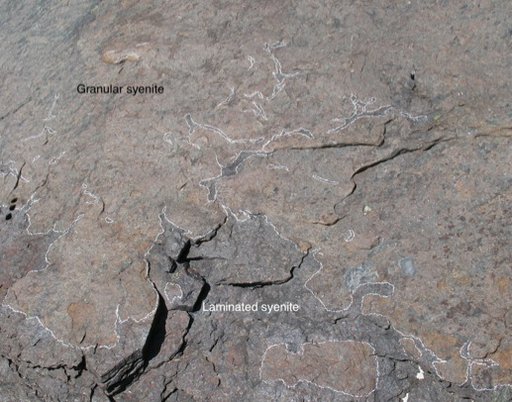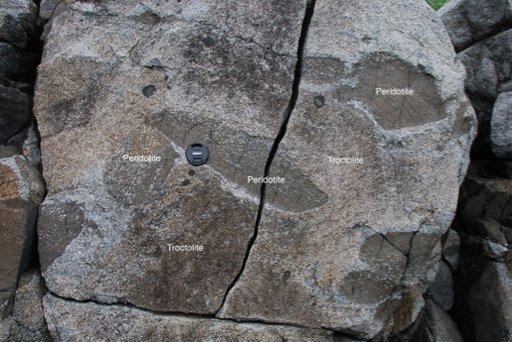The Gardar Province


The Klokken Intrusion
The Klokken Intrusion is a gabbro-syenite complex that formed by continuous in situfractionation of trachytic magma within a chamber lined by gabbro (Parsons 1981). The syenites show spectacular inverse layering in many places, from K-fsp dominated at the base to ultramafic at the top, with laminated K-fsp surrounded by hedenbergite + fayalite + oxides. The roof of the intrusion cooled quickly, forming sugary-textured ‘granular syenites’ that spalled off in slabs and sank down into the growing pile of laminated syenites. The interactions between these two rock types are fascinating (Parsons & Butterfield 1981) and form part of a new project investigating the physical behaviour of semi-solid crystal mushes (Holness, Humphreys, Pilbeam, & Ian Parsons).

The Tugtutoq Younger Giant Dyke Complex
The YGDC is a set of huge, coalescing dykes that outcrop intermittently for over 140 km. On the island of Tugtutoq the dykes are up to 800 metres wide, with layering that is very well developed in places (Upton & Thomas 1980). The solidified rocks grade from peridotite and troctolite (sensu lato, ol + pl) to syenites with K-fsp, oxides, apatite and clinopyroxene. There are spectacular slump zones where blocks of peridotite have been remobilised into the magma and deformed and smeared out (see below). There is also evidence for disaggregation and reworking of the troctolite into rounded, pellet-like fragments. The YGDC also forms part of a new project investigating the physical behaviour of semi-solid crystal mushes (Holness, Humphreys, Pilbeam, & Ian Parsons).
References
- Parsons (1981) Journal of Petrology, 22, 233-260
- Parsons & Butterfield (1981) Journal of the Geological Society of London, 138, 289-306
- Upton & Thomas (1980) Journal of Petrology, 21, 167-198